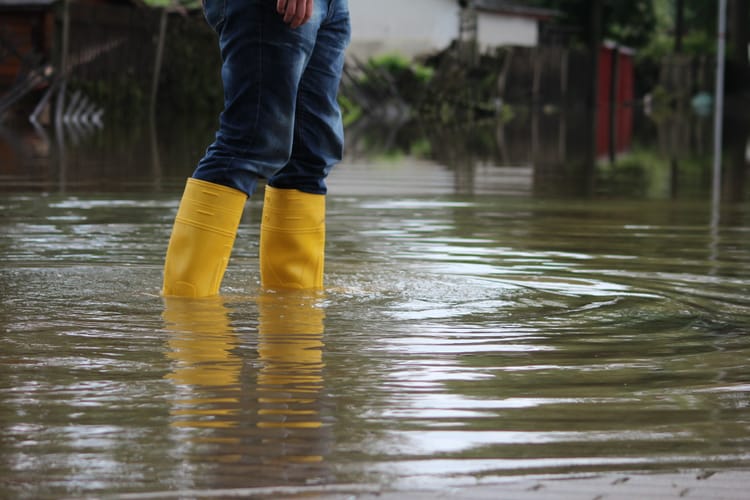Prepping construction clients for price hikes

How can you prepare your customers for price hikes? What should you do if ICE shows up? Why you should focus on distracted driving? We cover these topics and more this week, plus informed insights from a safety expert. But first: Leadership lessons from Taylor Swift.

>> That's cool! Cincinnati-area contractor Austin Vance (@tools_at_work on Instagram) test-drives new building tools and equipment so you don't have to.
>> Tell me about it. Tom Scott, director of safety at McClure Company, joins the Building PA podcast to talk about creating a culture of safety at your construction company.
>> Where's my stuff? The latest Gartner report has insights into the future of supply chains integral to the construction and manufacturing industries.
>> Sign me up! Learn more about sustainable biophilic andregenerative design and building in this Earth Day webinar from the National Association of Women in Construction. (Apr. 22)
>> Who's hungry? We've got the inspiration you need to upgrade your lunch!

'Every worker should get home safe'
Our industry logs a lot of miles, making distracted vehicle and equipment driving a serious concern for every sector. According to the Centers for Disease Control, “There is risk of injury from being struck by construction vehicles and equipment moving within work zones… and highway and street construction workers are at risk of fatal and serious injuries while working at roadway construction job sites.” The NAHB even created a video toolbox talk to help homebuilders reduce risks and several AGC chapters are participating in safe driving campaigns.
Since April is Distracted Driving Month, we asked Julia Kite-Laidlaw, senior program manager for the National Safety Council’s Road to Zero program, to help us understand the scope of the problem and how we can reduce it.
-Margot Lester
What's the most important thing to know about distracted driving?
Every second of distraction increases the risk of a serious crash or injury. Construction zones are already high-risk areas with narrow lanes, sudden stops and workers usually just a few feet from moving vehicles.
Momentary distractions—like glancing at a phone or adjusting the radio—can result in devastating consequences, including injuries to coworkers, motorists or pedestrians. Even if you’re driving at a relatively low speed, in the amount of time it takes to look at a text message, you can travel hundreds of feet. Staying fully alert isn’t just a best practice; it’s a lifesaving necessity.
Also, even the most experienced drivers can get distracted. Just because you’ve been driving for years without a problem doesn’t mean it’s OK to cut corners on safety. You can’t get complacent, because you can’t truly predict what other people are going to do. To protect yourself and others, and to be ready for anything unexpected, you need to focus entirely on driving every time you’re behind the wheel.
How can construction leaders reduce distracted driving?
Lead by example and make sure your employees know that safety is always worth prioritizing, even if it means you arrive on-site a few minutes late or you don’t return a phone call right away. When they feel secure giving all of their attention to the task of driving without extra stresses, you can feel secure they’re working free from distraction.
What else should we know?
Make distraction-free driving a core component of your safety culture. Preventing crashes in the workplace isn’t about finding fault or issuing punishment. We’re all human and we’re all going to make mistakes sometimes. The important thing is ensuring that mistakes don’t have serious or even deadly consequences. The good news is that distracted driving is completely preventable. At the end of the day, every worker should get home safe.
Edited for brevity and clarity.

Prepare your company and customers for price hikes
Some experts estimate that tariffs and retaliatory measures could increase materials costs by at least 5% to 7%. While we wait for the dust to settle on trade skirmishes, Matthew Gierke, a principal with FMI, offers seven things you can do now:
- Tighten project selection criteria and estimate review processes.
- Confirm planning and procurement best practices with your purchasing and pre-construction teams.
- Determine how much contingency is budgeted for pre-award and active jobs.
- Verify the number of days from project award to 100% buyout on all projects.
- Contact customers to talk about potential consequences for their projects and your enterprise.
- Align contract clauses with owners to share risk.
- Communicate clearly and candidly with employees about what lies ahead and how it affects the company and them.
Why it matters: You can’t avoid trade-related disruptions, but preparation can ease their impact. (FMI)

>> Tax Time: What to do if you miss the filing deadline
>> Going Green: Lennar, Dandelion Energy roll out residential geothermal
>> Federal Funding: Dashboard shows where infrastructure dollars go
>> Raise the Roof: Proposed bill would cut cost of reflective roofing

How to reduce construction vehicle and work-zone accidents
Apply these strategies to reduce vehicle and equipment accidents and keep construction drivers, operators and crews safe:
Require frequent comprehensive training and toolbox talks on safe driving and equipment operation, traffic control, work zone dangers and emergency response. Bonus: Include safe driving and work zone safety in new-hire onboarding.
Nurture a “heads up” mentality with a reporting system for near-misses to identify opportunities for training and prevention, and issue frequent reminders of the importance of communication between ground workers, flaggers and vehicle and equipment operators.
Use control measures and safety technology, including smart signage, barriers, cones, flagging operations and GPS-enabled wearable and vehicle technology. Bonus: Make sure you’re complying with federal guidelines where applicable.
Audit driving and safety practices with frequent inspections to identify risks and collect data to refine driving/operation and work zone protocols.
Why it matters: The National Highway Traffic and Safety Administration reports that distracted drivers kill thousands of people each year and a work-zone safety consortium estimates that 96,000 crashes, 37,000 injuries and 891 fatalities in work zones. (CONEXPO-CON/AGG)

Eight things to do before ICE comes to your worksite
- Develop a response plan.
- Retain copies of all documentation for easy retrieval.
- Explore E-Verify enrollment to exhibit compliance efforts.
- Listen politely if an ICE agent wants to explain how the I-9 compliance process works, even if you know.
- Do not allow employees to be alone with ICE agents.
- Remind workers they should not share information or documents with ICE without a subpoena and legal counsel present.
- Review immigrants’ rights with documented employees.
- Contact an immigration attorney with questions.
Why it matters: ICE raids on construction sites are increasing, and being prepared can help reduce disturbance. (HR Dive)
DISCLAIMER: This information is provided for general informational purposes only and is not intended as a substitute for professional legal consultation from a professional familiar with your individual circumstances; it is provided “as is” without any representations or warranties, express or implied. The Level expressly recommends that you always consult a lawyer for guidance on specific legal, immigration and compliance issues related to your business.

- See into the future: Dial into this Construction Business Owner webinar for emerging trends in automation, augmentation and wearables. (May 7)
- Build your business: Develop better-qualified lead generation and referral campaigns in this NAHB half-day live online class. (May 13)
- Stay safe! Review the safety hazards of outdoor work during this free American Road and Transportation Building Association on-demand online course.
Thanks for reading today's edition! You can reach the newsletter team at thelevel@mynewsletter.co. We enjoy hearing from you.
Interested in advertising? Email us at newslettersales@mvfglobal.com
Was this email forwarded to you? Sign up here to get this newsletter once a week.
The Level is written by Margot Lester and edited by Bianca Prieto.





